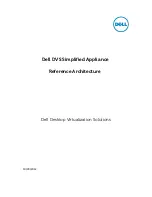
Appendix A. Glossary of Terms
G
Ground Connection
– Most sensors require one or more ground connections
in addition to excitation or signal inputs. Ground connections may serve any of
several purposes:
•
a reference for a single-ended (SE) analog voltage (use analog ground if
available)
•
a power return path (do NOT use analog ground for power return)
•
a connection for cable shield wire to help reduce electrical noise (do not
use analog ground for shield wires, also known as drain wires)
H
Highlight
– Text or objects can be highlighted, by positioning the cursor where
you want the highlight to begin, holding the left mouse button, and dragging it
across the words or group of objects to be highlighted. A single object can be
highlighted, by clicking it once with the left mouse button. Highlighted items
can then be edited or activated.
Holes
– When using Data Advise, the communications server always gets the
most recent data records, so if there are more records to be returned than can fit
in one packet there can be sequences of older data available from the
datalogger that have not yet been collected to the data cache. The server tracks
and collects these holes only if that option is enabled. This entry in the status
table shows the number of data points in missed records for the data storage
tables in that station.
Hole Collection
–
The process used by the server to collect data records
missing from the data cache but possibly still in the datalogger. If Hole
Collection is delayed or disabled, the memory in the datalogger can ring
around and overwrite the missing data records resulting in an Uncollectable
Hole.
Host Computer
– The machine where the communication server software is
running.
I
INI Files
– Configuration files that are used to preserve the last known setups
or states of a program or device.
Initialization String
– A string of alphanumeric characters that are sent to a
device, such as a modem, to prepare that device for communications.
InLocs
– Abbreviation for “Input Locations”. This entry in the status table
shows the number of input locations allocated for the program.
Input Location Storage
– Each time a measurement or calculation is
performed the resultant value is stored in an Input (memory) Location,
sometimes abbreviated as “InLoc.”
Input/Output Instructions
– Datalogger program instructions used to make
measurements or send data automatically to other devices.
A-5
Содержание LoggerNet
Страница 2: ......
Страница 30: ...Preface What s New in LoggerNet 4 xxvi...
Страница 32: ...Section 1 System Requirements 1 2...
Страница 44: ...Section 2 Installation Operation and Backup Procedures 2 12...
Страница 136: ...Section 4 Setting up Datalogger Networks 4 80...
Страница 227: ...Section 7 Creating and Editing Datalogger Programs 7 9...
Страница 298: ...Section 7 Creating and Editing Datalogger Programs 7 80...
Страница 402: ...Section 9 Automating Tasks with Task Master 9 12...
Страница 406: ...Section 9 Automating Tasks with Task Master 9 16...
Страница 450: ...Section 11 Utilities Installed with LoggerNet Admin and LoggerNet Remote 11 22...
Страница 454: ...Section 12 Optional Client Applications Available for LoggerNet 12 4...
Страница 462: ...Section 13 Implementing Advanced Communications Links 13 8...
Страница 482: ...Section 14 Troubleshooting Guide 14 20...
Страница 570: ...Appendix F Calibration and Zeroing F 16...
Страница 578: ...Appendix G Importing Files into Excel G 8...
Страница 579: ......
















































